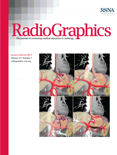
RADIOGRAPHICS
Scope & Guideline
Advancing Imaging Science for Tomorrow's Healthcare
Introduction
Aims and Scopes
- Multimodality Imaging Techniques:
The journal covers a wide range of imaging modalities, including MRI, CT, ultrasound, and PET, emphasizing their applications in various clinical scenarios. - Clinical Applications and Guidelines:
RADIOGRAPHICS publishes articles that provide clinical guidelines and practical approaches to imaging, helping radiologists navigate complex cases and improve diagnostic accuracy. - Interventional Radiology:
The journal includes content on interventional radiology, emphasizing minimally invasive procedures and their imaging guidance, which is crucial for modern clinical practice. - Radiologic-Pathologic Correlation:
Many articles focus on correlating imaging findings with pathological results, enhancing the understanding of disease processes and improving diagnostic accuracy. - Education and Training in Radiology:
The journal addresses the educational aspects of radiology, providing resources for training radiologists and improving their skills in interpretation and technology. - Emerging Technologies and Innovations:
RADIOGRAPHICS also explores advancements in imaging technology, including artificial intelligence applications and novel imaging techniques, to keep practitioners informed of the latest developments.
Trending and Emerging
- Artificial Intelligence in Radiology:
The integration of AI in imaging interpretation and workflow optimization is a rapidly growing theme, emphasizing the need for radiologists to understand and utilize these technologies effectively. - Diversity, Equity, and Inclusion:
There is an increasing focus on addressing disparities in healthcare, with articles dedicated to promoting diversity and equity within the radiology profession and patient care. - Interventional Techniques and Patient Management:
The rise of minimally invasive procedures has led to more publications on interventional radiology, highlighting innovative techniques and their impact on patient outcomes. - Personalized Medicine and Imaging:
The journal is increasingly covering topics related to personalized medicine, including tailored imaging protocols and assessments based on individual patient needs. - Collaboration in Multidisciplinary Care:
Emerging themes emphasize the importance of collaboration among healthcare professionals, showcasing how integrated care models can improve patient outcomes and streamline imaging processes.
Declining or Waning
- Basic Imaging Techniques:
There has been a noticeable decrease in articles focused solely on basic imaging techniques and their fundamental principles, as the field evolves towards more complex and multidisciplinary approaches. - Traditional Radiology Education:
As the focus shifts towards digital education and innovative teaching methods, traditional educational content that does not leverage technology has seen reduced publication frequency. - General Case Reports:
The journal has moved away from publishing numerous general case reports, favoring more comprehensive reviews and guidelines that provide broader insights into clinical practice. - Single Modality Focus:
Papers focusing exclusively on single modalities without integration into a broader clinical context are becoming less common, as the trend leans towards multimodality approaches. - Historical Perspectives on Imaging:
There is a waning interest in articles that delve into the historical development of imaging modalities, with a greater emphasis on current advancements and future directions.
Similar Journals

EUROPEAN RADIOLOGY
Exploring Innovations in Diagnostic ImagingEUROPEAN RADIOLOGY, published by SPRINGER, stands as a prestigious international journal in the field of radiology, nuclear medicine, and imaging, with an impressive impact factor that underscores its significance among peers. With an ISSN of 0938-7994 and an E-ISSN of 1432-1084, this journal provides a platform for cutting-edge research and advancements in medical imaging from 1991 to 2024. Recognized as a Q1 journal in both general Medicine and the specialized Radiology category by 2023, EUROPEAN RADIOLOGY ranks an impressive #17 out of 333 in its field according to Scopus, placing it in the 95th percentile. While it does not currently offer Open Access options, the journal remains essential reading for researchers, professionals, and students striving to stay at the forefront of developments in diagnostic imaging and related technologies. By contributing to a comprehensive understanding of radiological practices, EUROPEAN RADIOLOGY plays a crucial role in shaping the future of medical diagnosis and patient care.
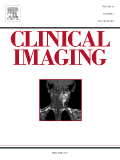
Clinical Imaging
Innovating Radiology Through Cutting-Edge ResearchClinical Imaging, published by Elsevier Science Inc, is a renowned journal dedicated to the field of radiology, nuclear medicine, and imaging. With an ISSN of 0899-7071 and an E-ISSN of 1873-4499, this esteemed publication has established its significance in advancing imaging science since its inception in 1989 and continues to make impactful contributions to the discipline through 2024. The journal holds a prestigious Q2 ranking in the category of Radiology, Nuclear Medicine, and Imaging, reflecting its critical role in bridging research and clinical practice. Currently ranked #113 out of 333 by Scopus, with a notable 66th percentile, it offers a platform for disseminating high-quality research, reviews, and case studies that inspire innovation and enhance imaging techniques. Although it primarily functions as a subscription-based journal, it remains dedicated to accessibility and the dissemination of pivotal findings that inform both academia and clinical settings. Clinical Imaging is essential for researchers, professionals, and students alike, offering insights that shape the future of diagnostic imaging.
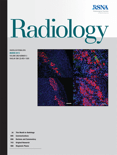
RADIOLOGY
Advancing the frontiers of medical imaging.RADIOLOGY, published by the Radiological Society of North America (RSNA), stands as a premier journal in the fields of radiology, nuclear medicine, and imaging. Established in 1945, this esteemed journal has consistently provided groundbreaking research and insights, helping to shape advancements in diagnostic imaging and therapeutic interventions. With a commendable Q1 ranking in its category and a remarkable 99th percentile ranking in Scopus, RADIOLOGY continues to be a pivotal resource for clinicians, researchers, and students alike. Although not an Open Access journal, it offers a wealth of high-quality peer-reviewed articles that contribute significantly to the ongoing discourse in the medical community. With a strong focus on innovative techniques and the integration of new technologies, RADIOLOGY remains essential for professionals aiming to stay at the forefront of medical imaging practices.
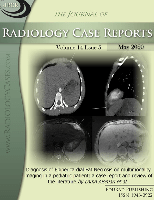
Journal of Radiology Case Reports
Bridging Clinical Practice and Research One Case at a TimeThe Journal of Radiology Case Reports is a pioneering open-access journal dedicated to the publication of original case reports in the field of radiology, providing a crucial platform for the dissemination of valuable clinical insights and advancements in diagnostic imaging. Published by EDURAD since 2008, this journal aims to bridge the gap between clinical practice and ongoing research by showcasing unique cases that can enhance diagnostic accuracy and patient care. With an ISSN of 1943-0922, the journal is committed to excellence, evidenced by its current ranking in the Scopus database, where it stands at position #253 among 333 titles in the field, corresponding to a 24th percentile. The journal is indexed in notable databases and features an HIndex reflective of its ongoing contribution to medical literature. Researchers, professionals, and students can access insightful articles covering diverse case scenarios, thus enriching their knowledge of medical laboratory technology and enhancing their expertise in radiology, nuclear medicine, and imaging. The journal not only provides a wide reach through its open access model but also encourages collaborative research efforts, fostering the rapid circulation of case-based knowledge essential to the evolving landscape of radiological science.

Egyptian Journal of Radiology and Nuclear Medicine
Transforming Discoveries into Clinical ExcellenceThe Egyptian Journal of Radiology and Nuclear Medicine, published by Springer, is a premier open access journal that has provided valuable insights and advancements in the fields of radiology and nuclear medicine since its initiation in 2010. With an E-ISSN of 2090-4762, this journal is dedicated to bridging the gap between research and clinical practice, allowing for the dissemination of high-quality research to a global audience. Situated in Germany, it enjoys a robust reputation in the academic community, evidenced by its categorization in the Q3 quartile for 2023, as well as its Scopus ranking, where it holds a position of #225 out of 333 in the domain of Radiology, Nuclear Medicine and Imaging, placing it in the 32nd percentile. The journal's open access model ensures that researchers, professionals, and students can freely access innovative studies, reviews, and case reports that discuss the latest methodologies, technological advancements, and clinical outcomes in radiology and nuclear medicine. As it looks toward its converged years spanning from 2010 to 2024, the Egyptian Journal of Radiology and Nuclear Medicine continues to be an essential resource for advancing knowledge and fostering ongoing collaboration in these critical fields.

AMERICAN JOURNAL OF ROENTGENOLOGY
Elevating Imaging Excellence.AMERICAN JOURNAL OF ROENTGENOLOGY (AJR), published by the American Roentgen Ray Society, stands as a beacon of excellence in the fields of Radiology, Nuclear Medicine, and Imaging. With an impressive impact factor positioning it in the Q1 category of both Medicine (Miscellaneous) and Radiology as of 2023, AJR is ranked 13th out of 333 journals in its category, reflecting its prominent presence and high relevance in advancing medical imaging knowledge and practice. Established in 1973 and continuing through to 2024, the journal encompasses a broad spectrum of research, critical reviews, and innovative techniques, making it a vital resource for researchers, healthcare professionals, and students alike. Although it does not currently offer open access options, AJR ensures that its rigorous, peer-reviewed content remains accessible to a global audience committed to the evolution of radiological science. With its home base in Leesburg, Virginia, AJR not only informs but also inspires advancements in radiology, enhancing diagnostic practices and patient care globally.
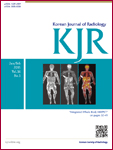
KOREAN JOURNAL OF RADIOLOGY
Empowering the Global Radiology CommunityKorean Journal of Radiology (ISSN: 1229-6929, E-ISSN: 2005-8330), published by the Korean Society of Radiology, stands as a leading international platform for the dissemination of high-quality research and advancements in the fields of radiology, nuclear medicine, and imaging. With a remarkable impact factor and ranked in the Q1 quadrant in its category, this journal showcases cutting-edge studies, clinical investigations, and comprehensive reviews that significantly contribute to the understanding and practice of medical imaging. Researchers, clinicians, and students alike will find the journal an invaluable resource, featuring innovative methodologies, case studies, and essential updates in imaging technology. Since its inception in 2000 and continuing through 2024, the Korean Journal of Radiology remains dedicated to promoting excellence and fostering collaborative research within the global radiology community, underscoring the importance of imaging in modern medicine.
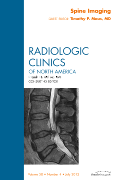
RADIOLOGIC CLINICS OF NORTH AMERICA
Advancing the Frontiers of Medical Imaging.Radiologic Clinics of North America, published by W B Saunders Co-Elsevier Inc, stands as a pivotal resource in the field of medical imaging and radiology. With a solid history dating back to 1963 and converging years extending to 2024, this journal has established itself as a reputable platform for original research, comprehensive reviews, and insightful discussions that advance the knowledge and practice of radiology, nuclear medicine, and imaging. Holding a Q2 classification in both the miscellaneous medicine and radiology categories and positioned within the 56th percentile among its peers, its contributions are vital for both academic research and clinical applications. Although it does not offer open access, the journal remains accessible through institutional subscriptions and is a must-read for researchers, healthcare professionals, and students keen on the latest developments in radiological practices. With a dedicated editorial board and a commitment to the highest academic standards, Radiologic Clinics of North America continues to shape the future of the medical imaging field.
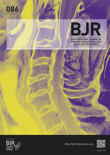
BRITISH JOURNAL OF RADIOLOGY
Elevating Standards in Radiology for Over 75 YearsBritish Journal of Radiology is a leading peer-reviewed journal published by the British Institute of Radiology, dedicated to advancing the field of radiology, nuclear medicine, and imaging. With a prestigious history dating back to 1945, this journal is at the forefront of disseminating cutting-edge research and innovations that significantly impact clinical practice. Currently enjoying a Q1 ranking in the field of radiology and Q2 in general medicine for 2023, it is recognized for its rigorous standards and high-quality content, ranking #87 out of 333 in Scopus for specialties related to Medicine, Radiology, Nuclear Medicine, and Imaging, placing it in the 74th percentile. Researchers, professionals, and students are encouraged to engage with the latest findings and comprehensive reviews presented within its pages, which contribute not only to academic discourse but also to the evolution of practice in the wider medical community.

Diagnostic and Interventional Radiology
Unlocking the Future of Radiology Through Open AccessDiagnostic and Interventional Radiology, published by the Turkish Society of Radiology, is a renowned open-access journal dedicated to advancing the fields of radiology, nuclear medicine, and imaging. With its transition to open access in 2022, the journal aims to foster knowledge dissemination and accessibility for researchers, healthcare professionals, and students alike. This esteemed publication, indexed in Scopus, features a robust editorial board and peer-reviewed articles that contribute significantly to the body of work in cardiology, radiology, and related disciplines. The journal currently holds a significant position, reflected in its Category Quartiles ranking—Q2 in Radiology, Nuclear Medicine, and Imaging, and Q3 in Cardiology and Cardiovascular Medicine, highlighting its relevance and impact in these critical medical fields. Research published in this journal is vital for evolving diagnostic and interventional techniques, clearly situating it as a key resource for those seeking to stay at the forefront of radiological science.